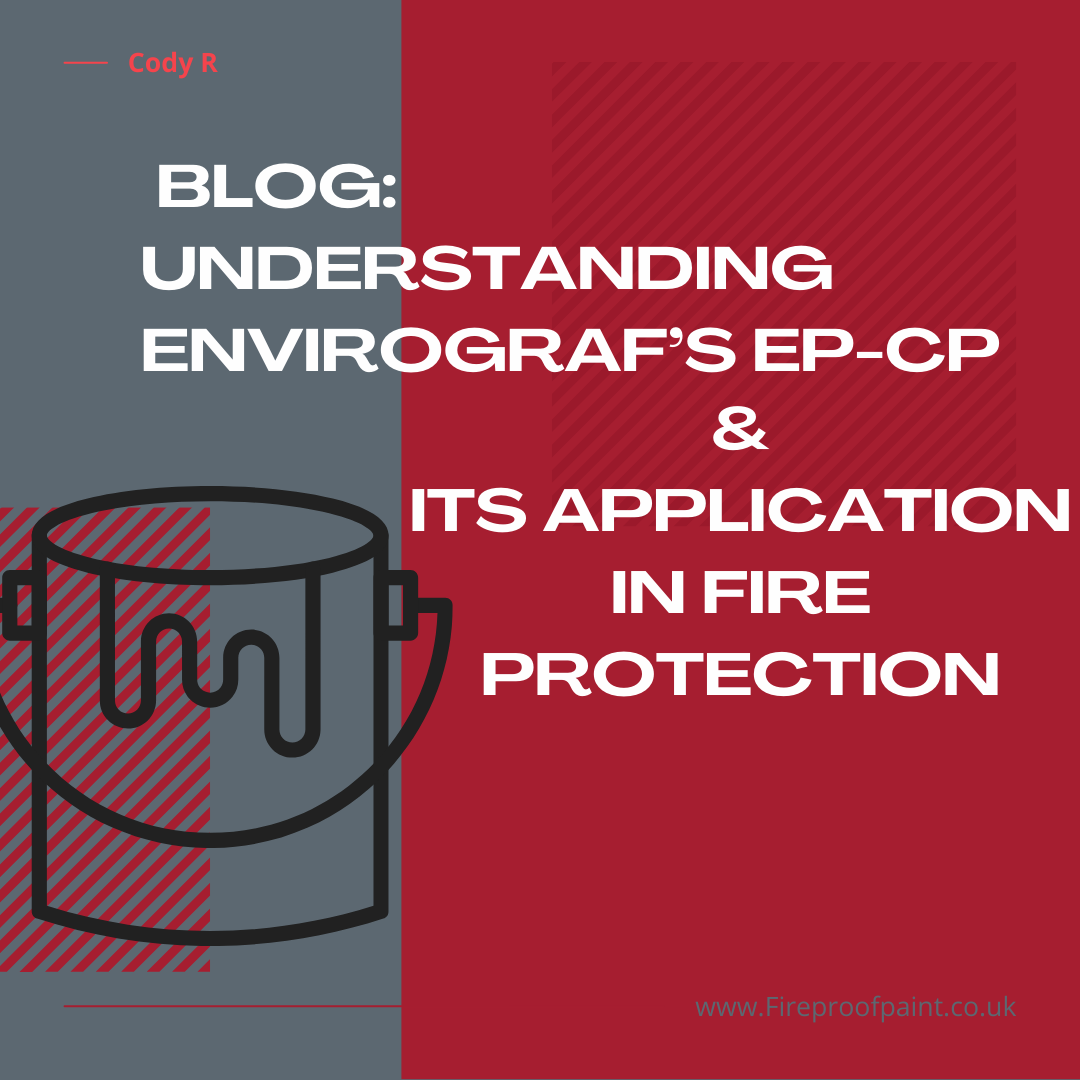
Understanding Envirograf’s EP-CP and Its Application in Fire Protection
Fire protection is an essential aspect of modern construction and safety systems, and advancements in fire-retardant technologies have become increasingly critical. One such innovation is Envirograf’s EP-CP, a fire-retardant treatment designed to enhance the safety of wood and other porous materials. But what exactly is EP-CP, and how does it contribute to fire safety?
What is Envirograf’s EP-CP?
EP-CP is a specialist fire-retardant coating created by Envirograf, a leader in passive fire protection solutions. Specifically formulated to be applied to porous surfaces, particularly wood, this product is a versatile solution in building and construction where fire risk is a concern. The EP-CP works by forming a protective layer over treated materials, significantly reducing their flammability and limiting the spread of fire.

Buy now!
The coating operates by chemically reacting when exposed to high temperatures, swelling up to form an insulating char. This char creates a barrier that prevents the underlying material from catching fire and slows down the overall spread of flames. By acting as both a physical and chemical shield, EP-CP helps to protect vital structural components, providing more time for evacuation and reducing potential property damage.
The Importance of Fire-Retardant Coatings
In environments where wood and other porous materials are used, the risk of fire can be particularly high. Wood is naturally flammable, and while its structural strength and aesthetic appeal make it a popular choice for construction, additional safety measures are often necessary. This is where fire-retardant coatings such as Envirograf’s EP-CP play a crucial role. They ensure that the materials used in buildings, especially those in high-risk areas like schools, hospitals, residential buildings, and public spaces, meet necessary fire safety standards.
Application of EP-CP
One of the key advantages of Envirograf’s EP-CP is its versatility in application. The coating is typically applied to wood surfaces in areas where fire protection is required, including walls, ceilings, and structural beams. It can be used on a variety of wood-based materials, from plywood to hardwood and softwood, as well as MDF and chipboard.
The application process is relatively straightforward. EP-CP is available in both clear and coloured forms, giving flexibility in terms of aesthetics while still providing maximum fire protection. It is usually applied using a brush, roller, or spray, depending on the scale of the project and the specific needs of the material being treated.
Before applying EP-CP, the surface must be clean and free from any contaminants like dust, grease, or old coatings, which could affect adhesion. Typically, two coats are recommended, with a drying period between them, ensuring that the wood or porous material is fully protected.
Once applied, EP-CP dries to form a durable, protective barrier that does not alter the appearance of the wood. This is particularly beneficial in projects where the natural beauty of wood is desired but fire safety is a priority. The coating is designed to penetrate the surface, creating a deep protective layer rather than just a superficial one.
Watch our attempt of applying Envirograf EP-CP to a plaster board ceiling!
Where EP-CP Can Be Used
Envirograf’s EP-CP is suitable for use in both new construction projects and retrofitting existing buildings. In public buildings such as schools, hospitals, and care homes, where fire safety regulations are stringent, applying fire retardant coatings like EP-CP can be essential in meeting legal requirements.
Additionally, the product is ideal for use in historic buildings where maintaining the original look and materials is important. Many older structures are built primarily with wood, and the application of EP-CP allows these buildings to retain their historical integrity while improving fire safety.
Furthermore, EP-CP is used in residential buildings, particularly in areas such as lofts, staircases, and wooden frameworks where fire could easily spread. It is also an excellent choice for commercial properties, including hotels and office spaces, where ensuring the safety of occupants is paramount.
Long-Term Benefits
Beyond the immediate fire-retardant properties, Envirograf’s EP-CP offers long-term benefits. Its durable composition ensures that the treated materials remain protected for years, reducing the need for frequent reapplication. Additionally, it helps to increase the overall lifespan of the wood, protecting it not only from fire but also from general wear and tear. The product is designed to be weather-resistant, making it suitable for both internal and external use.
The coating also provides peace of mind. Building owners, architects, and construction teams can be assured that with EP-CP, they are meeting fire safety regulations without compromising on aesthetics or structural integrity. Its effectiveness has been tested extensively to meet industry standards for fire protection, ensuring that it performs when needed most.
Conclusion
Envirograf’s EP-CP is a critical component in modern fire protection, especially when it comes to safeguarding wood and other porous materials in construction. Its ability to slow down the spread of fire by creating a protective barrier makes it an essential tool for enhancing safety in public, commercial, and residential buildings. With easy application, long-lasting results, and versatility across different types of wood, EP-CP is a practical and effective solution in the ongoing effort to improve fire safety standards.
In an era where fire safety is more important than ever, products like Envirograf’s EP-CP are invaluable, offering not only enhanced protection but also peace of mind for those responsible for the safety of buildings and their occupants.


